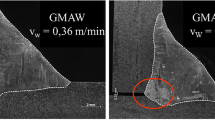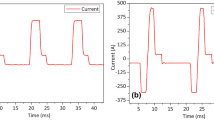A direct electric resistance heating has been shown to be a preferable method capable of directly achieving the specified properties of the wire during annealing, as well as enabling an improved controllability of the annealing process by utilizing process automation, and providing flexibility of the industrial systems. To estimate energy consumption, temperature fields were calculated during the drawing process under different heating conditions. In addition, temperature measurements were conducted and experimental data treatment was performed for an indirect heating using a continuous furnace and electric-current heating. It was shown that in the process of drawing with the use of a pulsed current, an electroplastic effect (EPE) is created in the deformation zone. The described mathematical model was used to obtain the temperature distribution in the heating zone of the wire exposed to a pulsed current, the nature of which causes the EPE occurrence. The EPE significantly reduces power consumption and operating voltage applied to the workpiece, while ensuring that the specified parameters of the wire are obtained when higher values of current are used. A pilot installation for performing electric resistance annealing (ERA) was designed and implemented. The main purpose of the implemented installation for annealing steel wire was to create a system of electrically conductive rollers used to supply electric current directly to the heating zone. Such system represents a robust stand-alone link in the wire heating process and allows for a trouble-free installation at any transporting section of the heated element (annealed material). The use of an automated control system with temperature and control current feedback for wire annealing ensures a stable operation of the entire system. The use of the experimental installation made it possible to achieve an 18% increase in the annealing rate for a 100 kg wire coil. An automated control system was used to control the drawing process and ensure uniform physical and mechanical properties of the resulting wire when using the electroplastic effect. As a result, the experimental data were obtained, the treatment of which made it possible to draw conclusions and make recommendations regarding a commercial implementation of such installations into the manufacturing process.




Similar content being viewed by others
References
A. V. Grushko, V. V. Kukhar, and Y. O. Slobodyanyuk, “Phenomenological model of low-carbon steels hardening during multistage drawing,” Solid State Phenomena, No. 265 SSP, 114–123 (2017); https://doi.org/10.4028/www.scientific.net/SSP.265.114.
V. V. Kukhar, A. V. Grushko, and I. V. Vishtak, “Shape indexes for dieless forming of the elongated forgings with sharpened end by tensile drawing with rupture,” Solid State Phenomena, No. 284 SSP, 408–415 (2018); https://doi.org/10.4028/www.scientific.net/SSP.284.408.
G. P. Zhigulev, M. N. Skripalenko, V. A. Fadeev, and M. M. Skripalenko, “Modeling of deformation zone during plate stock molding in three-roll plate bending machine,” Metallurgist, No. 64 (3-4), 348–355 (2020);https://doi.org/10.1007/s11015-020-01002-y.
G. S. Kovrev, Electric Resistance Heating during Treatment of Non-Ferrous Metals [in Russian], Metallurgiya, Moscow (1975).
A. V. Grushko, “Development of usage of Brinell hardness test method for flow stress definition during cold deformation,” Metallurgical and Mining Industry, No. 5 (1), 11–16 (2013).
O. A. Troitsky, V. I. Stashenko, V. G. Ryzhkov, V. P. Lyashenko, and E. B. Kobilskaya, “Electroplastic wire drawing and new technology development light wire,” Problems of Atomic Science and Technology, No. 4, 111–117 (2011).
O. A. Troitsky, Yu. V. Baranov, Yu. S. Avraamov, and A. D. Shlyapin, Physical Basics and Technologies of Modern Material Processing [in Russian], in 2 vol., Vol 1, Inst. Komp. Issled., Izhevsk (2004).
V. P. Lyashenko, V. N. Klimova, I. Y. Sokol, and B. B. Diomidov, “Optimization of annealing practice for rapidly cooled ShKh15 steel,” Steel in the USSR, No. 16 (6), 289–291 (1986).
B. Sereda, S. Sheyko, Y. Belokon, and D. Sereda, “The influence of modification on structure and properties of rapid steel,” Paper Presented at the AIST Steel Properties and Applications Conference Proceedings — Combined with MS and T’11, Mater. Sci. and Tech., 457–460 (2011).
A. N. Shapoval and A. A. Shapoval, “Development of the unit for multi-stage vibration drawing of metal products,” Tsvetnye Metally, No. 4, 77–82 (2002).
A. Shapoval, R. Kantemyrova, O. Markov, A. Chernysh, R. Vakulenko, and I. Savchenko, “Technology of production of refractory composites for plasma technologies,” Proc. of the 25th IEEE Int. Conf. on Problems of Automated Electric Drive, Theory and Practice, No. 9240830, 2020 (2020); https://doi.org/10.1109/PAEP49887.2020.9240830.
O. E. Markov, V. V. Kukhar, V. N. Zlygoriev, A. A. Shapoval, A. S. Khvashchynskyi, and R. U. Zhytnikov, “Improvement of upsetting process of four-beam workpieces based on computerized and physical modeling,” FME Transactions, No. 48 (4), 946–953 (2020); https://doi.org/10.5937/fme2004946M.
P. V. Shilyaev, S. V. Denisov, P. A. Stekanov, V. L. Kornilov, M. L. Krasnov, V. N. Urtsev, F. V. Kaptsan, A. V. Shmakov, V. M. Schastlivtsev, Y. N. Gornosturev, M. L. Lobanov, and S. I. Platov, “Production of new-generation rolled steel under conditions of Magnitogorsk iron and steel company,” Metallurgist, No. 64 (9-10), 902–911 (2021); https://doi.org/10.1007/s11015-021-01070-8.
S. M. Gorbatyuk, V. A. Osadchii, and E. Z. Tuktarov, “Calculation of the geometric parameters of rotary rolling by using the automated design system Autodesk Inventor,” Metallurgist, No. 55 (7-8), 543–546 (2011); https://doi.org/10.1007/s11015-011-9465-8.
D. V. Terentyev, N. N. Ogarkov, S. I. Platov, and A. V. Kozlov, “Effect of operating modes and contact surface oil absorption on lubricant film thickness in heavy-duty friction units of metallurgical plants,” Chernye Metally, No. 9, 60–64 (2018).
I. S. Platov, V. A. Nekit, and N. N. Ogarkov, “Improving the controlled cooling after wire rod rolling in the finishing block of stands,” Materials Science Forum, No. 870, 620–624 (2018); https://doi.org/10.4028/www.scientific.net/MSF.870.620.
N. A. Chichenev, “Reengineering of the slab-centering unit of a roughing mill stand,” Metallurgist, No. 62 (7-8), 701–706 (2018); https://doi.org/10.1007/s11015-018-0711-1.
V. V. Nazaratin, O. A. Kobelev, M. V. Efimov, A. A. Selyutin, and P. M. Yavtushenko, “Analysis of technologies used to make hollow ingots and prospects for their improvement,” Metallurgist, No. 56 (9-10), 672–678 (2013); DOI: https://doi.org/10.1007/s11015-013-9634-z.
A. Y. Albagachiev, A. M. Keropyan, A. A. Gerasimova, and O. A. Kobelev, “Determination of rational friction temperature in lengthwise rolling,” CIS Iron and Steel Review, No. 19, 33–36 (2020); https://doi.org/10.17580/cisisr.2020.01.07.
O. A. Kobelev, A. V. Zinov’ev, and M. A. Tsepin, “Effective production of large pipe blanks,” Steel in Translation, No. 39 (6), 501–505 (2009); https://doi.org/10.3103/S0967091209060163.
V. E. Kondratenko, V. V. Devyatiarova, S. V. Albul, and L. M. Valeeva, “Method of calculating volumetric scaffold of monolithic slab formwork,” IOP Conf., Series: Mater. Sci. and Eng., No. 971 (5), 052036 (2020); https://doi.org/10.1088/1757-899X/971/5/052036.
M. G. Naumova, I. G. Morozova, and P. V. Borisov, “Study of metal surface with color image obtained with laser marking,” Solid State Phenomena, No. 99 SSP, 943–948 (2020); https://doi.org/10.4028/www.scientific.net/SSP.299.943.
S. P. Eron’ko, V. L. Danilov, A. V. Kuklev, M. Y. Tkachev, V. V. Tinyakov, and S. V. Mechik, “Experience of design and industrial application of systems for the driven feed of slag-forming mixtures into the crystallizers of slab CCM,” Metallurgist, No. 64 (3-4), 214–222 (2020); https://doi.org/10.1007/s11015-020-00986-x.
S. P. Eron’ko, V. L. Danilov, M. Y. Tkachev, V. V. Tinyakov, and E. A. Ponomareva, “Model studies and modernization of a manipulator for tapping spout replacement in continuous steel casting,” Metallurgist, No. 64 (3-4), 301–308 (2020); https://doi.org/10.1007/s11015-020-00996-9.
M. Zagirnyak, V. Zagirnyak, D. Moloshtan, V. Drahobetskyi, and A. Shapoval, “A search for technologies implementing a high fighting efficiency of the multilayered elements of military equipment,” Eastern-European J. of Enterprise Technologies, No. 6 (1-102), 33–40 (2019); https://doi.org/10.15587/1729-4061.2019.183269.
Author information
Authors and Affiliations
Corresponding author
Additional information
Translated from Metallurg, Vol. 65, No. 4, pp. 42–50, April, 2021. Russian DOI: 10.52351/00260827_2021_04_42.
Rights and permissions
About this article
Cite this article
Khrebtova, O.A., Shapoval, A.A., Mos’pan, D.V. et al. Automatic Temperature Control System for Electric Resistance Annealing of Steel Welding Wire. Metallurgist 65, 412–422 (2021). https://doi.org/10.1007/s11015-021-01171-4
Received:
Published:
Issue Date:
DOI: https://doi.org/10.1007/s11015-021-01171-4




